Blood, is a fluid pumped
by the heart that circulates throughout the body via the
arteries, veins, and capillaries. An adult male of average
size normally has about 6 quarts (5.5 liters) of blood.
The blood carries oxygen and nutrients to the body tissues
and removes carbon dioxide and other wastes. The colorless
fluid of the blood, or plasma, carries the red and white
blood cells, platelets, waste products, and various other
cells and substances.
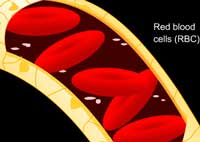
Red blood cells are very small and shaped like
tiny doughnuts each contains molecule of a red colored
chemical called hemoglobin Red Cells give blood its colour
and accounts for up to 40% of its volume. The main function
of these cells is to carry oxygen from the lungs to all
the cells of the body and remove waste products such as
carbon dioxide. Hemoglobin contains the element
Iron, making it an excellent vehicle for transporting oxygen
and carbon dioxide. As blood passes through the lungs, oxygen
molecules attach to the hemoglobin. As the blood passes
through the body's tissue, the hemoglobin releases the oxygen
to the cells. The empty hemoglobin molecules then bond with
the tissue's carbon dioxide or other waste gases, transporting
it away.

White blood cells vary in shape because they play
a variety of roles when defending against infections
White blood cells only make up about 1 percent of blood,
but their small number belies their immense importance.
They play a vital role in the body's immune system-the primary
defense mechanism against invading bacteria, viruses, fungi,
and parasites. They often accomplish this goal through direct
attack, which usually involves identifying the invading
organism as foreign, attaching to it, and then destroying
it. This process is referred to as phagocytosis.
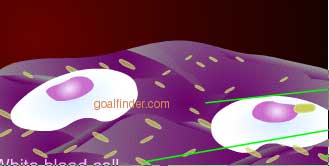
Platelets
The smallest cells in the blood are the platelets, which
are designed for a single purpose-to begin the process
of coagulation, or forming a clot, whenever a blood
vessel is broken. As soon as an artery or vein is injured,
the platelets in the area of the injury begin to clump together
and stick to the edges of the cut.
Blood clotting (technically "blood coagulation")
is the process by which (liquid) blood is transformed into
a solid state.
This blood clotting is a complex process involving many
clotting factors (incl. calcium ions, enzymes, platelets,
damaged tissues) activating each other.
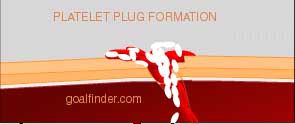
The three stages of this process are:
1. Formation of Prothrombinase
Prothrombinase can be formed in two ways, depending of which
of two "systems" or "pathways" apply.
These are
Intrinsic System
This is initiated by liquid blood making contact with a
foreign surface, i.e. something that is not part of the
body; or
Extrinsic System
This is initiated by liquid blood making contact with damaged
tissue.
Both the intrinsic and the extrinsic systems involve interactions
between coagulation factors. These coagulation factors have
individual names but are often referred to by a standardized
set of Roman Numerals, e.g. Factor VIII (antihaemophilic
factor), Factor IX (Christmas factor).
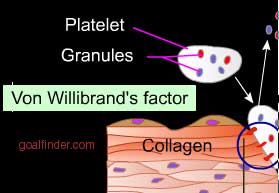
2. Prothrombin converted into the enzyme Thrombin
Prothrombinase (formed in stage 1.) converts prothrombin,
which is a plasma protein that is formed in the liver, into
the enzyme thrombin.
3. Fibrinogen (soluble) converted to Fibrin (insoluble)
In turn, thrombin converts fibrinogen (which is also a plasma
protein synthesized in the liver) into fibrin.
Fibrin is insoluble and forms the threads that bind the
clot
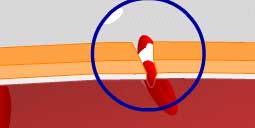
|

